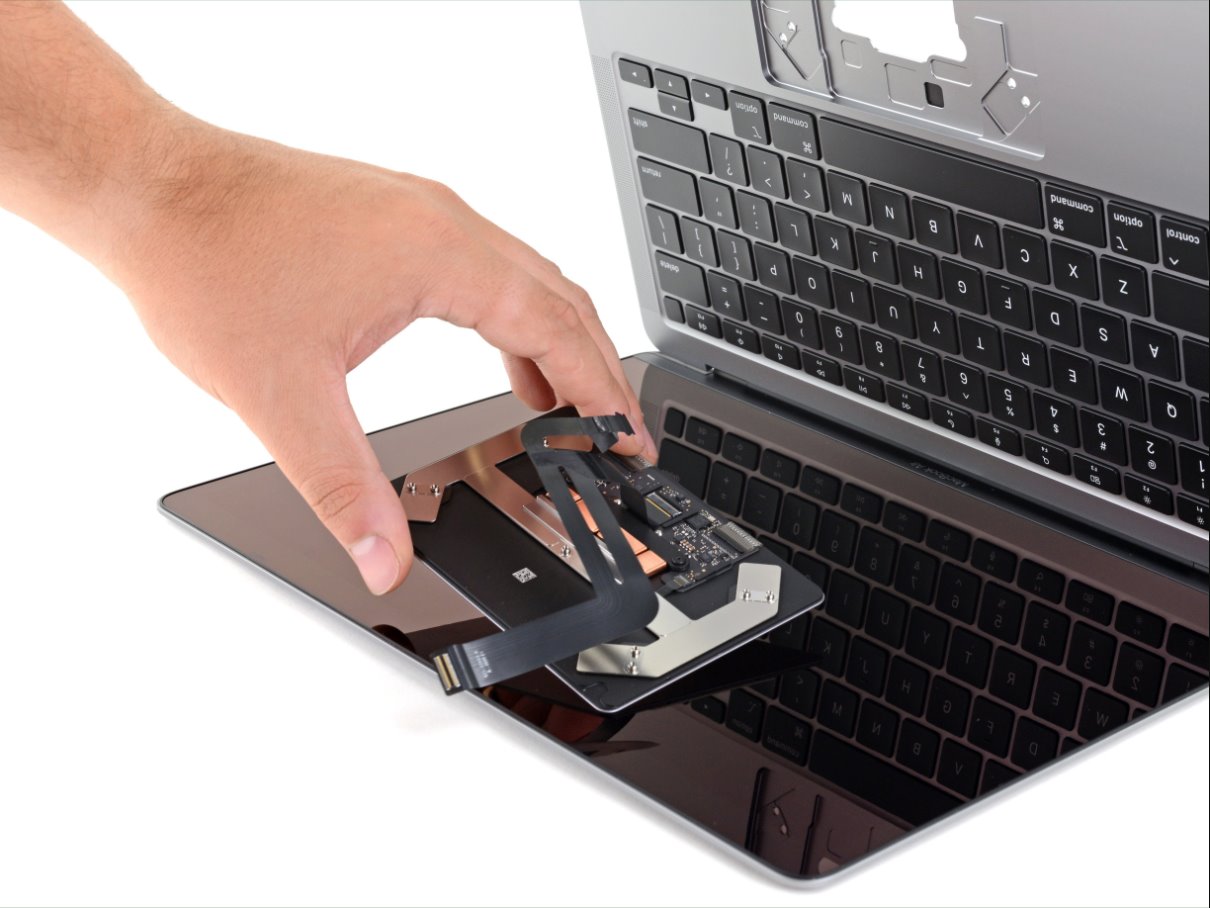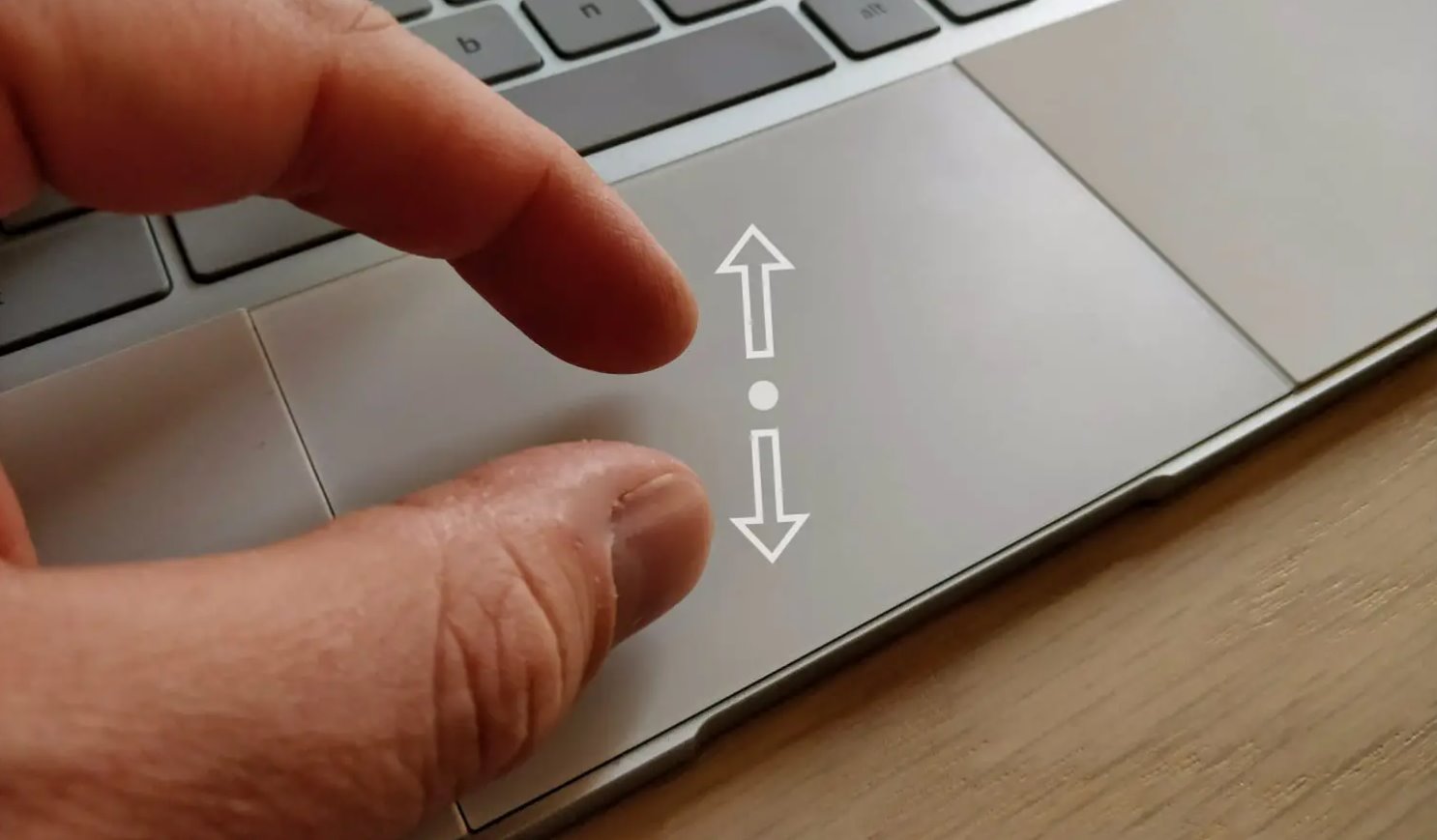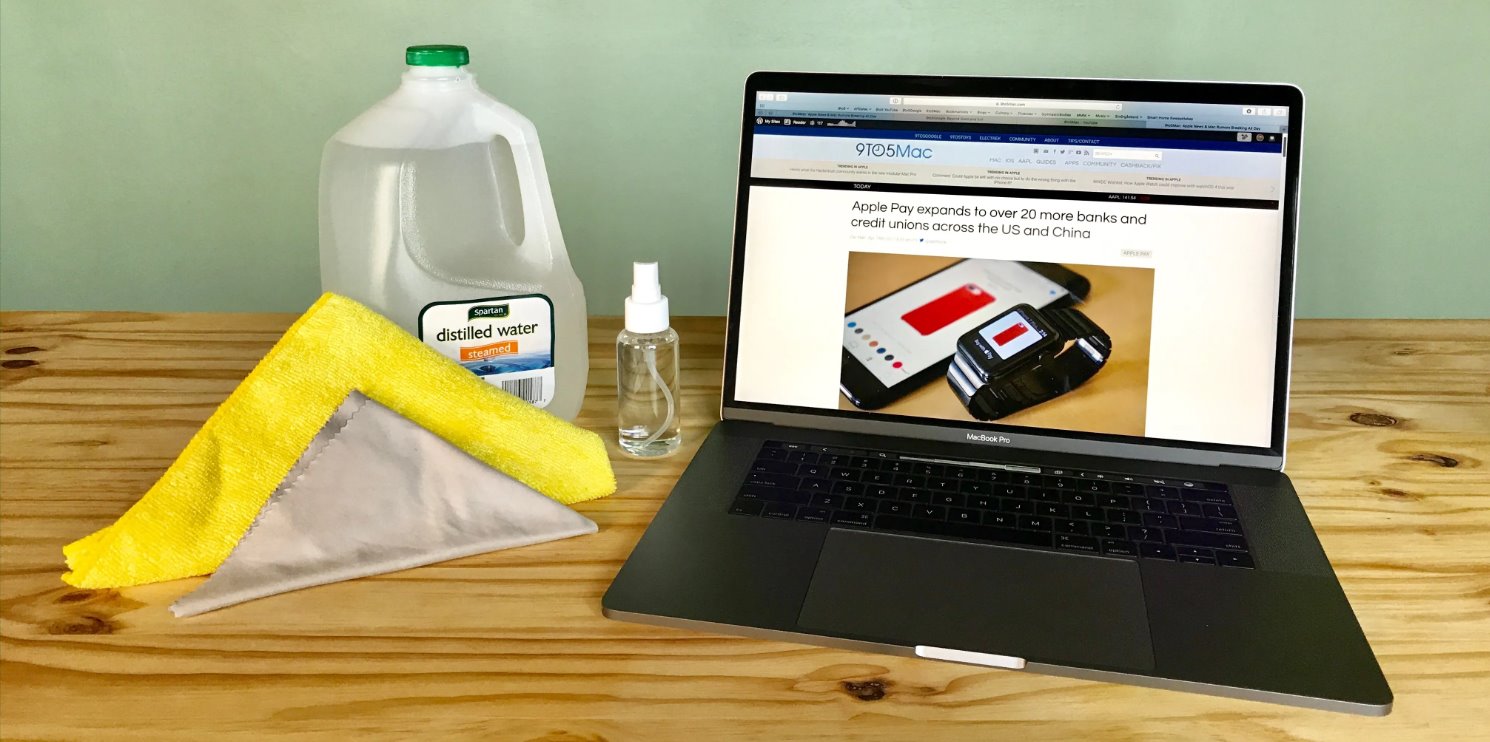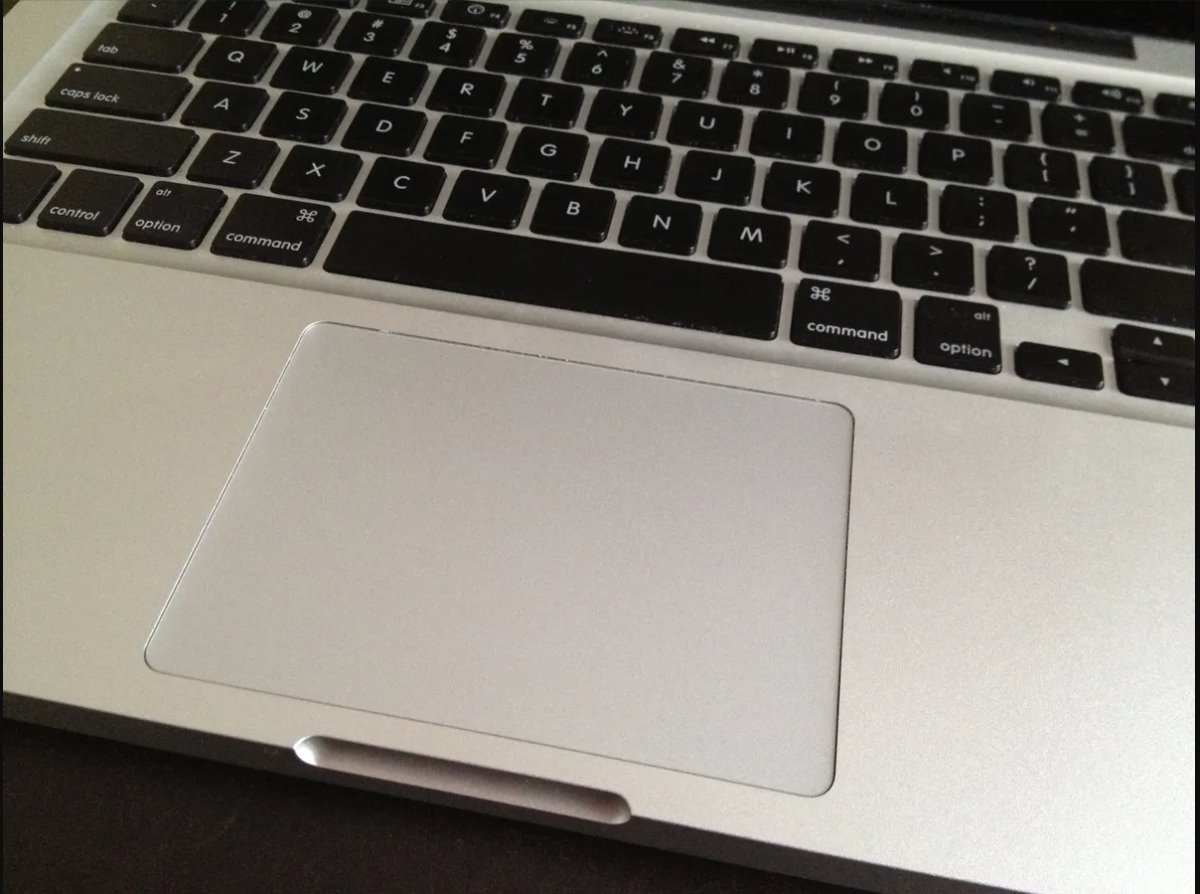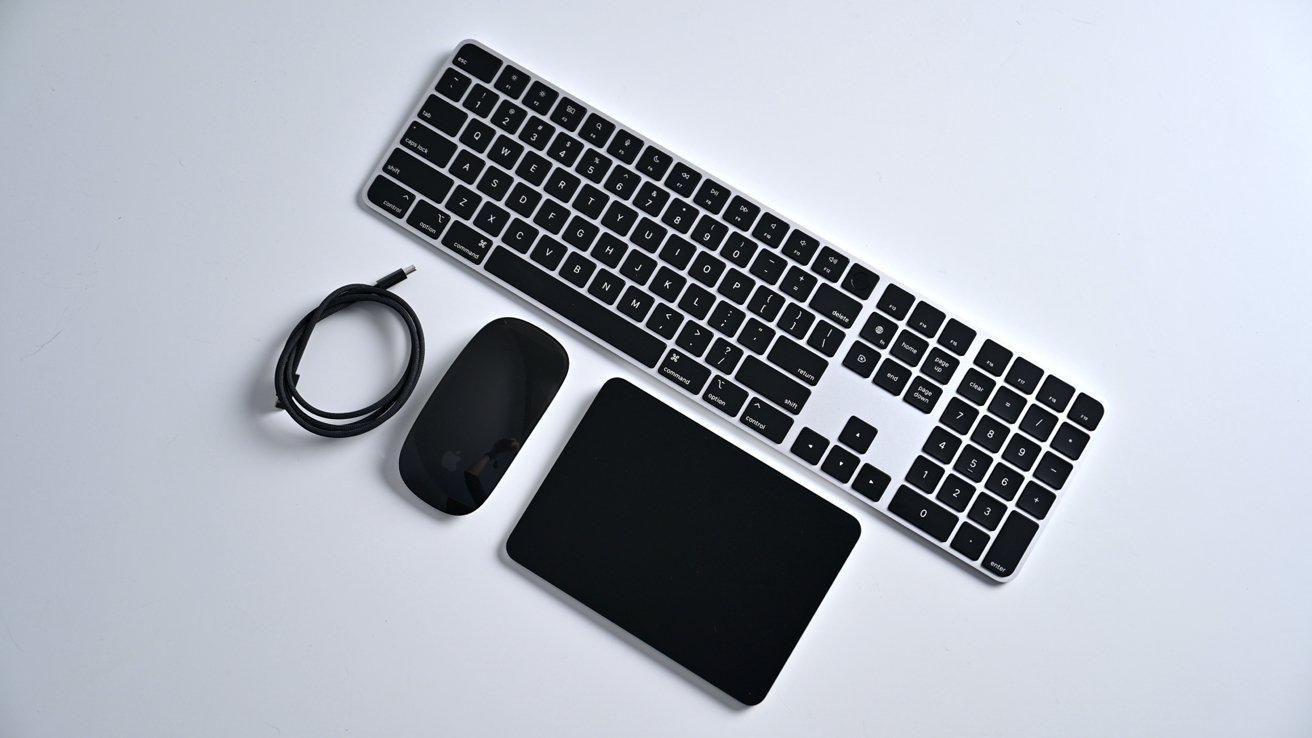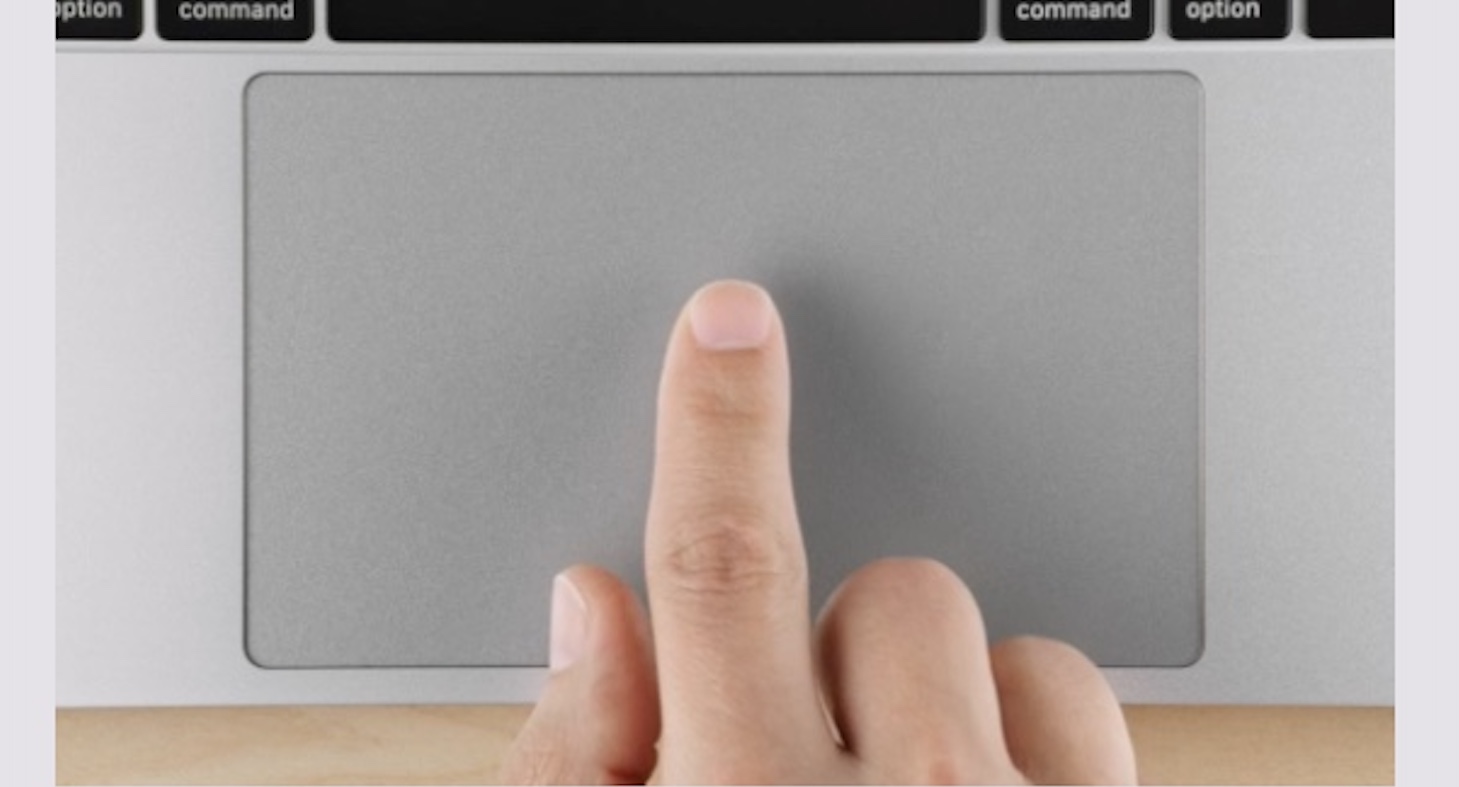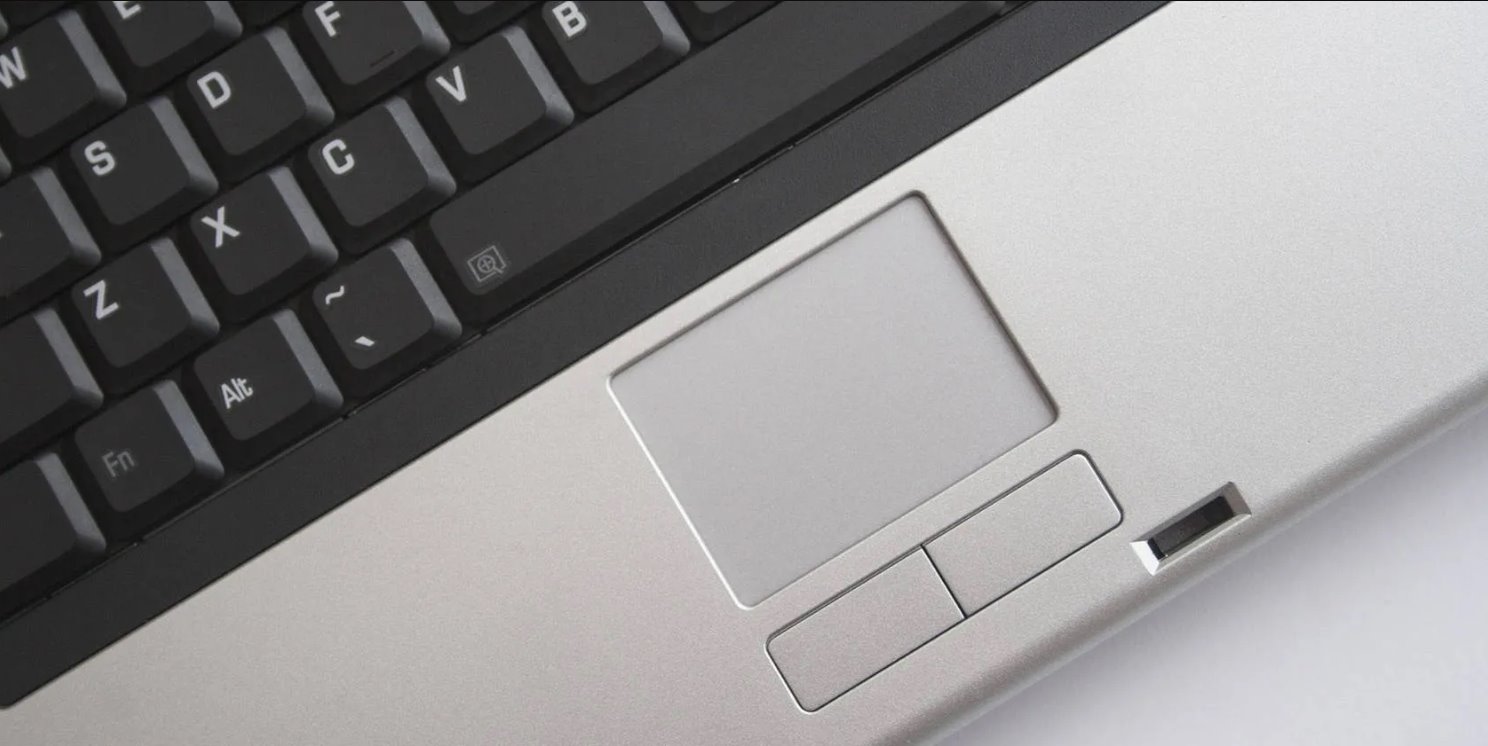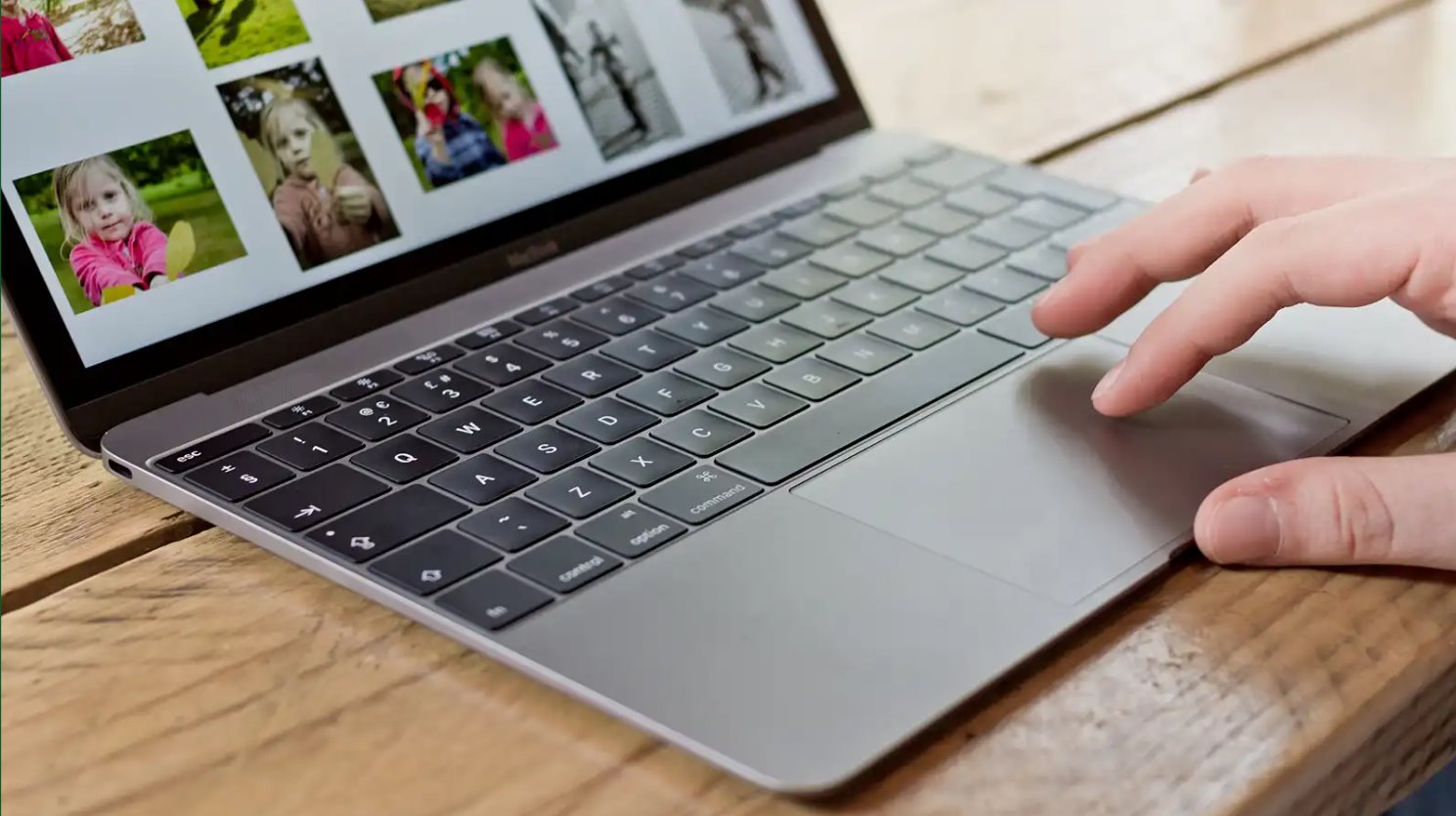Introduction
Having a trackpad that is not working on your Mac can be quite frustrating, especially if you rely on it for navigation and control. Whether you’re using a MacBook, MacBook Pro, or a Magic Trackpad, a non-responsive or malfunctioning trackpad can hinder your productivity and disrupt your workflow.
In this article, we will explore common issues that can cause a trackpad to stop working on a Mac and provide troubleshooting steps to help you resolve the problem. By following these steps, you can quickly identify the cause of the issue and take the necessary actions to get your trackpad back in working condition.
It’s important to note that the troubleshooting steps described here are applicable to various Mac models running different versions of macOS. However, the names of menus and settings may vary slightly depending on your specific Mac model and operating system version.
If you are facing challenges with your Mac’s trackpad, don’t worry, you’re not alone. This guide will walk you through the most common issues and solutions to help you regain control of your trackpad.
Read on to learn the steps to troubleshoot and resolve trackpad issues on your Mac.
Common Issues and Troubleshooting Steps
When your trackpad is not working on your Mac, there can be several underlying issues causing the problem. To help you diagnose and resolve the issue, here are some common problems you may encounter and the corresponding troubleshooting steps:
- Physical Obstruction: The trackpad may not respond if there is any physical object obstructing its movement. Ensure that there is no dirt, debris, or any objects on the trackpad’s surface. Clean it gently with a microfiber cloth.
- Software Glitches: Sometimes, software glitches or temporary errors can cause the trackpad to stop working. Restart your Mac to see if the issue resolves. If not, continue with the troubleshooting steps.
- Battery Issues: If you’re using a Magic Trackpad or a MacBook with a non-removable battery, a low battery charge can affect trackpad functionality. Connect your Mac to a power source or replace the trackpad’s batteries, if applicable.
- Trackpad Preferences: Incorrect trackpad preferences can lead to non-responsive behavior. Go to “System Preferences” > “Trackpad” and check that the desired gestures and settings are enabled.
- Trackpad Settings: Make sure to explore the various options in the “Trackpad” settings to ensure that the behavior of the trackpad meets your expectations. Adjust the tracking speed, scrolling direction, and gestures as needed.
- Restarting the Mac: Restarting can often resolve minor software issues. Click on the Apple menu and select “Restart”. After the restart, check if the trackpad is functioning correctly.
- Updating macOS: Outdated software can cause conflicts and compatibility issues. Check for available updates by clicking on the Apple menu, selecting “System Preferences”, and then “Software Update”. Install any pending updates and restart your Mac.
- Resetting the System Management Controller (SMC): The SMC controls various hardware functions, including the trackpad. Resetting it can help resolve hardware-related issues. The steps to reset the SMC differ based on the Mac model. Refer to Apple’s support documentation for the specific instructions for your Mac.
- Resetting the NVRAM/PRAM: Resetting the NVRAM/PRAM can help resolve certain system-related issues. Shut down your Mac, then turn it on and immediately press and hold the Command + Option + P + R keys until you hear the startup chime twice. Release the keys and check if the trackpad is working.
- Checking for Updates for Trackpad Drivers: If you’re using a MacBook or MacBook Pro, ensuring that you have the latest trackpad drivers installed can help address compatibility issues. Check for updates by clicking on the Apple menu, selecting “System Preferences”, and then “Software Update”.
- Seeking Professional Assistance: If none of the above steps resolve the issue, it’s advisable to seek professional assistance from an authorized Apple service center or an Apple Support representative for further diagnostics and repairs.
By following these troubleshooting steps, you can tackle most common trackpad issues on your Mac. Remember that it may not be necessary to perform all of these steps. Start from the top and work your way down until the issue is resolved. Hopefully, with the right steps, you’ll be able to get your trackpad back up and running smoothly.
Physical Obstruction
One of the most common causes of a non-responsive trackpad is a physical obstruction. Dust, dirt, or debris can accumulate on the trackpad’s surface, hindering its ability to detect touch gestures accurately.
To resolve this issue, start by ensuring that your hands are clean and free from any residue. Then, gently wipe the trackpad’s surface with a soft microfiber cloth to remove any dirt or smudges. Be careful not to apply excessive force or use abrasive materials that could damage the trackpad’s surface.
If you notice any stubborn particles that refuse to come off, you can use a soft-bristled brush or a toothpick to carefully remove them. Make sure not to press too hard or insert anything into the trackpad that could cause further damage.
It’s worth noting that some Mac devices have a force touch trackpad, which can provide feedback based on the pressure applied. If your trackpad is not responding as expected, ensure that you’re using the appropriate amount of pressure to activate the clicks or gestures.
After cleaning the trackpad and ensuring there are no physical obstructions, test its functionality by performing different gestures and clicking actions. If the trackpad is now responsive, the physical obstruction was the likely cause of the issue.
However, if the trackpad still doesn’t respond after removing any physical obstructions, you may need to explore other possible causes and continue with the troubleshooting steps.
Software Glitches
Software glitches or temporary errors can sometimes cause the trackpad on your Mac to stop working. These issues can occur due to various reasons, such as incompatible software updates, conflicting applications, or system bugs.
To troubleshoot software glitches, the first step is to restart your Mac. This simple action can often resolve minor software issues and restore normal trackpad functionality.
If restarting doesn’t solve the problem, try using an external mouse or trackpad (if available) to navigate to the “System Preferences” on your Mac. From there, select “Trackpad” and check if any gestures or settings are disabled or improperly configured.
If you recently installed any software or made changes to your Mac, try uninstalling or reverting those changes to see if it resolves the trackpad issue. This can involve removing recently installed applications, resetting specific settings, or even restoring your Mac to a previously working state using Time Machine or a system backup.
If the trackpad problem persists and you suspect that it’s related to a specific application, try closing and reopening the application or updating it to the latest version. In some cases, restarting the application or updating it can resolve compatibility issues and restore trackpad functionality.
If you’re running an older version of macOS, updating to the latest version can also help resolve software-related problems. Apple regularly releases updates that include bug fixes, performance improvements, and compatibility enhancements for various hardware components, including the trackpad. Check for available updates by clicking on the Apple menu, selecting “System Preferences”, and then “Software Update”.
If none of these steps resolve the trackpad issue, it’s recommended to proceed to the next troubleshooting step to rule out other potential causes before seeking further assistance.
Battery Issues
If you’re using a MacBook or a Magic Trackpad, battery-related issues can also cause problems with the trackpad’s functionality. Here are a few troubleshooting steps to address potential battery-related trackpad issues:
First, ensure that your MacBook is connected to a power source. If the battery level is critically low, the trackpad’s responsiveness may be affected. Connect your MacBook to a power adapter and allow it to charge for a while. Once the battery is sufficiently charged, check if the trackpad is functioning properly.
If you’re using a Magic Trackpad that relies on removable batteries, check the battery levels and replace them if necessary. Low battery power can cause the trackpad to become unresponsive. Remember to use fresh batteries that are compatible with your device.
In some cases, a MacBook’s battery may need to be recalibrated to resolve trackpad issues. To do this, fully charge your MacBook, then disconnect it from the power adapter and use it until the battery is completely drained and the MacBook shuts down. Afterward, connect the power adapter and allow your MacBook to charge to full capacity. This recalibration process can help resolve minor battery-related problems that could affect the trackpad’s performance.
If the trackpad issue persists after following the above steps, it’s advisable to explore other potential causes and continue with the troubleshooting process to restore full functionality to your trackpad.
Trackpad Preferences
Improperly configured trackpad preferences can impact its functionality and responsiveness. To troubleshoot trackpad preference-related issues, follow these steps:
Start by navigating to “System Preferences” on your Mac. You can access it from the Apple menu or by clicking the System Preferences icon in the Dock.
Within the System Preferences window, locate and click on the “Trackpad” option. This will open the Trackpad settings panel, where you can customize various gestures and behavior.
First, ensure that the “Enable Trackpad” or similar option is checked. If it’s disabled, enable it to activate the trackpad.
Next, explore the different tabs and options within the Trackpad settings panel. Adjust the tracking speed, scrolling direction, and other gestures to your preference.
Pay attention to individual gestures, such as “Tap to click” or “Force Click and haptic feedback”. Ensure that the desired gestures are enabled and configured correctly.
Experiment with different settings to see if any changes restore the trackpad’s functionality. For example, disabling certain gestures or adjusting the tracking speed may help resolve issues.
If you’re unsure about specific settings or gestures, you can also click on the “Learn more…” or “Help” buttons within the Trackpad settings panel to access detailed information and guides provided by Apple.
After making changes to the Trackpad preferences, test the trackpad to verify if it’s now functioning as expected. If you’re still encountering issues, continue with the next troubleshooting steps to identify and resolve potential causes of the trackpad problem.
Trackpad Settings
The trackpad settings on your Mac allow you to customize its behavior and responsiveness. Adjusting these settings can help resolve trackpad-related issues. Follow these steps to explore and modify the trackpad settings:
Start by navigating to “System Preferences” on your Mac, either through the Apple menu or by clicking the System Preferences icon in the Dock.
Within the System Preferences window, locate and click on the “Trackpad” option. This will open the Trackpad settings panel where you can customize various trackpad features.
Once you’re in the Trackpad settings panel, explore the different tabs and options available. You should see settings for tracking speed, scrolling, gestures, and more.
Start by adjusting the tracking speed slider to modify how fast or slow the cursor moves on the screen in response to your finger movements. Experiment with different settings to find a speed that is comfortable for you.
Next, check the scrolling options. Make sure the scrolling direction is set to your preference, whether it’s natural or traditional scrolling. This setting can affect the way you navigate and interact with documents, websites, and other content.
Take some time to explore the various gestures available within the Trackpad settings. These gestures can include actions like swiping between pages, zooming in or out, accessing Mission Control, and more. Enable or disable gestures as needed and customize them according to your preferences.
It’s also worth noting that some Mac models may have additional settings specific to their trackpad. For example, force touch trackpads allow you to adjust the sensitivity of Force Click and haptic feedback. If applicable, explore and adjust these settings to fine-tune the trackpad’s behavior.
After making any changes to the trackpad settings, test the trackpad’s functionality to see if the issues you were experiencing have been resolved. If not, proceed to the next troubleshooting steps to investigate other potential causes.
Restarting the Mac
One of the simplest and most effective troubleshooting steps for resolving trackpad issues on your Mac is to restart the system. Restarting your Mac can help clear temporary system glitches and restore normal functionality to the trackpad.
To restart your Mac, click on the Apple menu in the top-left corner of the screen and select “Restart” from the dropdown menu. Alternatively, you can press the Control + Command + Power button combination to initiate a restart.
Wait for your Mac to shut down and then power back on. Once the system has completely restarted, test the trackpad to see if it is now responsive and working as expected.
Restarting your Mac not only resets the system but also closes any background processes or applications that may have been causing conflicts with the trackpad. This simple step often resolves many temporary software-related issues.
If the trackpad is still not functioning correctly after restarting, proceed to the next troubleshooting steps to further investigate and resolve the issue.
Updating macOS
Keeping your macOS up to date is important not only for security and performance enhancements but also for resolving various software-related issues that can affect the trackpad on your Mac.
To check for available updates, click on the Apple menu in the top-left corner of the screen, then select “System Preferences.” In the System Preferences window, click on “Software Update.”
Your Mac will then check for any updates available for your macOS. If updates are found, click on the “Update Now” button to begin the installation process. Make sure you have a stable internet connection and sufficient battery or power supply.
Allow the update to download and install. Depending on the size of the update, it may take a while to complete. Once the installation is finished, your Mac will restart.
After updating macOS, test the trackpad to see if the issues you were experiencing have been resolved. The update may include bug fixes, performance improvements, and compatibility enhancements for various hardware components, including the trackpad.
If the trackpad problem persists after updating macOS, there may be other factors contributing to the issue. In that case, proceed to the next troubleshooting steps to further investigate and resolve the problem.
Resetting the System Management Controller (SMC)
If you’re still experiencing trackpad issues on your Mac, resetting the System Management Controller (SMC) can help resolve hardware-related problems that could be affecting the trackpad’s functionality.
The SMC is responsible for managing various hardware functions, including power management, thermal management, and the trackpad. Resetting it can often resolve issues related to these hardware components.
The steps to reset the SMC differ depending on the Mac model you have:
- MacBooks with Removable Batteries: Shut down your MacBook. Disconnect the power adapter and remove the battery. Keep it disconnected for about 15 seconds. Then, reconnect the battery and power adapter, and turn on your MacBook.
- MacBooks with Non-Removable Batteries: Shut down your MacBook. Connect the power adapter to your MacBook. On the built-in keyboard, press and hold the left-side Shift + Control + Option keys, along with the power button, for about 10 seconds. Release all the keys and the power button. Then, turn on your MacBook.
- Desktop Macs: Shut down your Mac. Unplug the power cord from the outlet for about 15 seconds. Then, plug it back in and wait for about five seconds. Finally, turn on your Mac.
After resetting the SMC, power on your Mac and check if the trackpad is functioning properly. The trackpad issues you were experiencing may have been caused by an SMC-related problem, and resetting it can often resolve such issues.
If resetting the SMC does not resolve the trackpad issue, proceed to the next troubleshooting steps to further investigate and troubleshoot the problem.
Resetting the NVRAM/PRAM
If you’re still facing trackpad issues on your Mac, resetting the Non-Volatile RAM (NVRAM) or Parameter RAM (PRAM) can help resolve certain system-related problems that could be affecting the trackpad’s functionality.
The NVRAM/PRAM stores important settings related to your Mac’s hardware and system preferences. Resetting it can clear any corrupted settings and restore the default values, potentially resolving the trackpad problem.
To reset the NVRAM/PRAM on your Mac, follow these steps:
- Shut down your Mac.
- Turn on your Mac and immediately press and hold the Command + Option + P + R keys on your keyboard.
- Keep holding the keys until you hear the startup sound for the second time. This indicates that the NVRAM/PRAM has been reset.
- Release the keys and let your Mac continue to start up.
After resetting the NVRAM/PRAM, test the trackpad to see if the issues have been resolved. The reset process may clear any corrupted settings that were affecting the trackpad’s functionality.
If the trackpad is still not working correctly after resetting the NVRAM/PRAM, proceed to the next troubleshooting steps to further investigate and resolve the problem.
Checking for Updates for Trackpad Drivers
If you’re using a MacBook or MacBook Pro, ensuring that you have the latest trackpad drivers installed is crucial for optimal performance. Outdated or incompatible drivers can lead to trackpad issues. Here’s how you can check for updates:
Click on the Apple menu in the top-left corner of the screen, and select “System Preferences” from the dropdown menu.
In the System Preferences window, click on “Software Update” to check for updates for your macOS.
After updating macOS, it’s important to ensure that the trackpad drivers are also up to date. To do this, follow these steps:
- Click on the Apple menu again and select “App Store” from the dropdown menu.
- Within the App Store, click on “Updates” in the top navigation bar.
- Scroll through the updates list and look for any available trackpad driver updates. If an update for the trackpad driver is available, click on the “Update” button next to it to install the update.
Once the update is installed, restart your Mac to apply the changes.
Checking for trackpad driver updates ensures that your Mac’s trackpad is equipped with the latest improvements and bug fixes. It can help resolve compatibility issues and ensure optimal performance.
If your trackpad issues persist even after updating the trackpad drivers, proceed to the next troubleshooting steps to investigate and address any other potential causes.
Seeking Professional Assistance
If you have exhausted all the troubleshooting steps mentioned above and your trackpad is still not working, it may be time to seek professional assistance. Apple authorized service centers and Apple Support representatives are available to help diagnose and resolve more complex trackpad issues.
Professional assistance is particularly recommended if you have attempted all the troubleshooting steps and the problem persists. Trained technicians have the expertise and tools necessary to perform advanced diagnostics and repairs on your Mac.
When seeking professional assistance, there are a few things you can do to prepare for a smoother and more efficient troubleshooting process:
- Document the Issue: Take note of the specific trackpad issues you are experiencing, including any error messages or unusual behavior. This information will help the technicians better understand and address the problem.
- Backup Your Data: Before bringing your Mac to a service center, it’s always a good idea to back up your important files and data. This ensures that your data is protected during any potential repairs or diagnostic processes.
- Check Warranty Coverage: If your Mac is still under warranty, verify the warranty status before seeking professional assistance. Depending on the issue, the repair or replacement may be covered by Apple’s warranty.
- Schedule an Appointment: To save time, it’s advisable to schedule an appointment with an Apple authorized service center. This way, you can ensure that a technician is available to assist you when you arrive.
Remember, seeking professional assistance is often the best course of action when all other troubleshooting steps have been exhausted. Apple service centers have the knowledge and resources to properly diagnose and resolve trackpad issues, ensuring that your Mac is back in optimal working condition.









